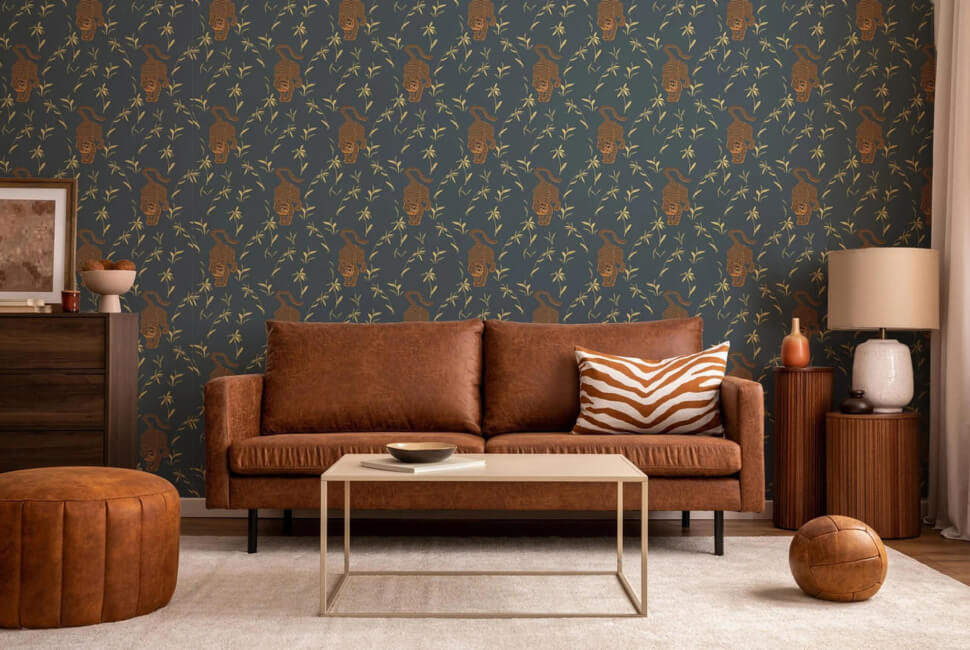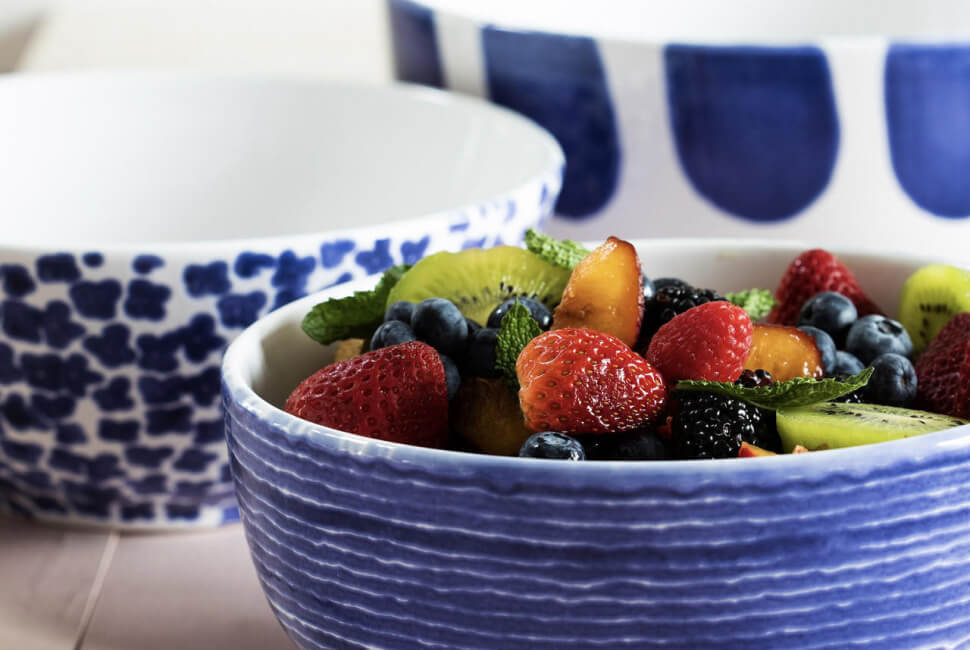Global Inspirations: How Cultural Influences Are Shaping Modern Home Decor Trends
Posted by Belle and June on April 5, 2024
Our decor choices reflect our identity, values, and aesthetic senses, but where do those influences come from? More often than not, the patterns on our carpets and the colors on our walls are imbued with stories from distant lands and times past. In this profound exploration, we'll discover how cultural influences have woven themselves intricately into the fabric of our homes, shaping the aesthetics that we see today.
Home decor is not just about buying furniture or painting walls; it is about creating a space that is an extension of ourselves. One of the most compelling influences on modern home decor trends is culture. Cultural influences are more than just a passing fad; they are a reflection of our evolving global community.
Cultural Influences on Home Decor Trends
Cultures across the globe have always expressed their identities through art and design, and the modern home decor industry is no exception. Cultural influences on home decor trends can be seen in various aspects, from furniture silhouettes and patterns to color schemes and materials. Here are a few ways in which cultural elements permeate the walls of our homes:
Traditional Elements vs. Modern Interpretations
In the age of nostalgia, bringing back traditional decor elements is not uncommon. Designers often find inspiration in classical forms and reinterpret them to fit modern spaces. The ornate carvings of colonial furniture, the delicate lines of Islamic tile work, and the sturdy craftsmanship of Amish woodworking have all birthed contemporary interpretations that appeal to a wide audience seeking a link to the past.
Globalization and Fusion of Styles
The world is more interconnected than it has ever been, and this has led to a beautiful cultural fusion of different design aesthetics. Notably, the rising trend of 'eclectic' decor is a testament to the global design convergence. Homeowners are increasingly mixing and matching pieces from various cultural backgrounds, resulting in unique, personalized spaces that celebrate diversity.
Color Palettes and Textures Inspired by Cultures
Color and texture can significantly impact the mood of a room. These elements are often borrowed from cultural heritage to evoke certain emotions or themes. For instance, the warm earthy tones of African mud cloth, the vibrant hues of Indian rangoli, or the cool serenity of Scandinavian design all play a part in dictating the atmospheric palette of modern homes.
Sustainable Practices Influenced by Cultural Values
Cultural influences in home decor extend beyond aesthetics and into the realm of sustainability. Many traditional cultural practices were inherently sustainable, and these principles are finding their way into contemporary interiors. From the Japanese 'mottainai' (a sense of regret towards waste) to the Native American 'waste not, want not' approach, cultural values are driving a shift towards eco-friendly decor choices.
Examples of Cultural Trends in Home Decor
To better understand how cultural influences shape modern home decor, it's helpful to look at some prevalent design movements that have clear cultural roots. Here are three notable examples:
Scandinavian Minimalism
Hailing from the clean, simple design ethos of Scandinavia, this trend emphasizes function and form. Minimalist furniture, neutral color palettes, and the use of natural light are key characteristics. The Danish concept of 'hygge,' focused on coziness and inner warmth, further influences homes decorated in the Nordic style.
Bohemian Eclecticism
The bohemian trend is a melting pot of global influences, reflecting a free-spirited and non-conformist lifestyle. Rich textiles from India, woven wall hangings reminiscent of Native American crafts, and exotic plants contribute to the eclectic, well-traveled aesthetic of bohemian home decor.
Japanese Zen Aesthetics
Japanese design principles, rooted in Zen philosophy, promote a serene and uncluttered living space aimed at fostering tranquility and mindfulness. Low furniture, sliding doors, and the concept of 'shibui' (subtle elegance) are all elements borrowed from traditional Japanese architectural styles and decor.
These examples highlight how specific cultural aesthetics and philosophies have permeated modern home design, offering a glimpse into how we can create spaces that resonate with our souls.

How Cultural Influences Drive Consumer Choices
Emotional Connections
We are drawn to cultural elements that have a personal significance or that evoke a particular feeling. This emotional connection can stem from one's heritage, travel experiences, or a general appreciation of a culture's art and customs. For many, incorporating elements into their homes is a way to feel connected to something larger or to relive pleasant memories.
Expression of Identity Through Home Decor
Our home decor is an expression of our identity and values. By selecting items that reflect our appreciation for a particular culture, we communicate our interests and beliefs to others. In a multicultural world, this can also be seen as a statement of inclusivity and respect for diversity.
Influence of Social Media and Global Connectivity
The digital age has amplified the spread and accessibility of cultural design influences. Social media platforms and online marketplaces enable consumers to explore and acquire decor items from around the world, leading to a more diverse decor landscape. Additionally, shared digital spaces allow people to showcase their homes and engage with others, further fueling trends and inspiration drawn from different cultures.
Technology and Innovation Redefining Cultural Exchange
In the age of technological breakthroughs, the exchange of cultural design trends has transcended geographical boundaries. Innovations like 3D printing and augmented reality are democratizing design, making it more accessible to the global population. Social media platforms serve as contemporary bazaars, where aesthetics from around the world are showcased, compared, and adopted instantaneously.
Design movements such as Japandi, a fusion of Japanese and Scandinavian styles, have found their way from local ateliers to international living rooms, thanks to online platforms that connect designers, artisans, and consumers from all corners of the globe. This digital interconnectedness has not only broadened our design horizons but has also created new cultural blends that are finding their places in our homes.
From the vibrant palette of the Moroccan souks to the minimalist elegance of the Nordic living spaces, technology has accelerated the spread of diverse cultural elements, transforming our homes into a collage of global influences. Amidst this digital exchange, the challenge for modern homeowners lies in curating a space that pays homage to cultural heritage while maintaining a unified and personal aesthetic.
The Social Media Effect on Design Aesthetics
The rise of 'influencer culture' has amplified the effect of social media on home decor. Platforms like Instagram and Pinterest have become digital mood boards, where visuals of eclectic designs serve as inspiration for millions. Hashtags like #BohemianChic or #MidCenturyModern guide users to a plethora of profiles, each depicting a unique expression of cultural motifs within the home.

Sustainability and Ethical Considerations in Home Decor
The global renaissance in mindful living has seen a pronounced influence on home decor, with sustainability and ethical design guiding the popular narrative. Cultural diversity and practices around the world have long dictated the use of natural materials and ethical manufacturing processes, shaping design choices that coexist with the environment.
In an effort to preserve cultural authenticity, designers and homeowners are turning to local artisans and traditional crafting techniques, often handed down through generations. This exchange fosters a mutual learning experience, where contemporary design meets age-old wisdom, resulting in innovative yet sustainable home furnishings.
Eco-conscious movements inspired by cultural traditions, such as the Wabi-Sabi philosophy from Japan or the reuse culture in Maori design, emphasize imperfection, impermanence, and the beauty of natural aging. These principles not only inform the aesthetic choices but also reinforce the sustainable practice of upcycling, breathing new life into old objects and materials.
The Balancing Act of Multi-Cultural Decor
When combining designs from multiple cultures, a harmonious balance must be struck. The aim is not to create a replica of a cultural space but to craft an environment that integrates diverse elements with sensitivity and synergy. Cultural respect and authenticity are paramount; however, personal interpretation and creative expression are equally important in making a space one's own.
In the end, the beauty of cultural influences in home decor lies in their ability to invite us on a global exploration within our own walls. They remind us that the desire for beauty and the need for comfort are universal, and the love for one's culture does not have to be exclusive. Our homes can be a celebration of diversity, threading together the tapestry of humanity in a design language that is uniquely ours.
Diverse Cultural influences in modern home decor trends are as varied as the cultures that inspire them. They provide us with an endless array of possibilities to create homes that reflect our unique blend of identities and experiences. By understanding and appreciating these influences, we not only enrich our living spaces but contribute to a global narrative that celebrates the richness of human creativity. Whether it's the simplicity of Scandinavian design, the vibrancy of a bohemian retreat, or the serenity of Japanese interior design, the tapestry of cultural home decor trends continues to weave a fascinating story of who we are and where we come from.

